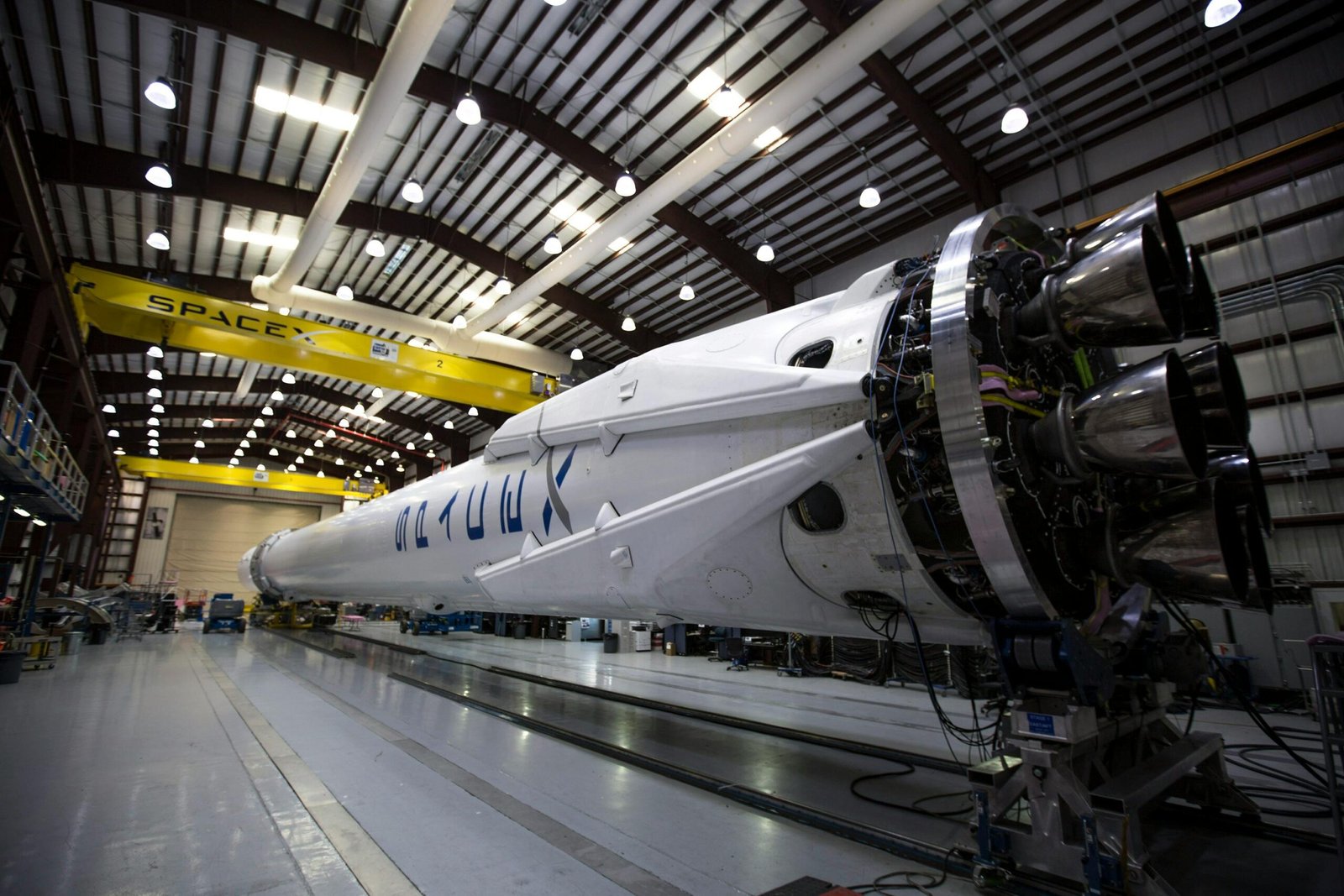For decades, humanity has been captivated by ambitious visions of the cosmos, fueled by dreams of establishing sprawling interplanetary colonies and achieving the seemingly impossible feat of faster-than-light travel. Yet, despite these soaring aspirations, a surprising reality persists: in many critical respects, the core space tech we utilize today appears remarkably similar to the capabilities we possessed in the 1980s. While other scientific and technological domains – notably computing, medicine, and renewable energy – have experienced nothing short of exponential, breathtaking growth, space technology seems to have encountered a curious stagnation in several key areas that are crucial for truly transformative breakthroughs.
This perceived lack of dramatic advancement has prompted considerable reflection. This article aims to delve into the complex reasons why space tech hasn’t progressed at the pace many observers and enthusiasts anticipated. We will explore a multifaceted set of contributing factors, including persistent and often fluctuating funding challenges, significant geopolitical and political shifts that redirect priorities, and, perhaps most fundamentally, the inherent, unyielding limitations imposed by the very laws of physics itself.
The Stagnation of Space Tech: A Historical Perspective
When we compare space tech today to the Apollo era, the lack of revolutionary progress is striking. The Space Shuttle, first launched in 1981, was retired in 2011 with no true successor. Meanwhile, rockets still rely on chemical propulsion, just as they did 50 years ago.
1. Key Areas Where Space Tech Has Stalled
- Propulsion Systems – Chemical rockets remain dominant, with no breakthrough alternatives like nuclear or antimatter propulsion.
- Human Spaceflight – No human has traveled beyond low-Earth orbit since 1972.
- Cost Efficiency – Launch costs only dropped significantly in the 2010s with SpaceX’s reusable rockets.
2. Why Hasn’t Space Tech Advanced Faster?

a. Declining Government Investment
The cessation of the Cold War, a monumental geopolitical shift, ushered in a dramatic recalibration of national priorities, leading to a precipitous decline in public funding for space technology research across major global powers. In the United States, the enthusiasm and urgency that propelled the Apollo program to its apex in the 1960s dissipated without the direct ideological competition with the Soviet Union. NASA's budget, which famously commanded a staggering 4.4% of the entire U.S. federal budget at its peak in 1966 during the height of the space race, has since experienced a sustained and significant contraction. Today, it languishes below 0.5% of federal spending, a mere fraction of its Cold War-era investment.
This trend of underinvestment was not exclusive to the U.S. The United Kingdom and the European Union, while maintaining robust scientific sectors, similarly scaled back their comparative spending on space technology following the geopolitical thaw. The imperative to demonstrate technological supremacy on the global stage, a powerful driver of innovation during the Cold War, was largely replaced by domestic concerns, economic shifts, and a more diversified approach to scientific funding. Without the existential competition, the political will to allocate vast resources to ambitious, long-term space endeavors waned, leaving many once-promising space technology initiatives to contend with shrinking budgets and uncertain futures. This profound shift in public investment profoundly impacted the pace and scope of progress in various sectors of space technology, particularly those requiring decades of sustained, large-scale government backing.
b. Lack of Economic Incentives
Beyond the realm of governmental funding, another significant factor contributing to the perceived slowdown in certain areas of space tech innovation is its unique commercial landscape. Unlike sectors such as smartphones or artificial intelligence, where rapid development is fueled by the promise of immediate and substantial commercial profitability, space tech has historically lacked a clear and easily accessible path to generating quick returns on investment. The development cycles are incredibly long, the capital requirements are immense, and the risks are extraordinarily high.
While the last two decades have witnessed the pioneering entry of private companies like SpaceX and Blue Origin into the space arena, a welcome development that has indeed injected new energy and competition, their immediate profit motives still largely orbit around more commercially viable ventures. For these burgeoning private entities, the primary focus remains on areas with clearer revenue streams, such as the deployment of satellite constellations for communication and Earth observation, which offer consistent income, or the burgeoning field of space tourism, targeting a niche market of ultra-high-net-worth individuals. These endeavors, while impressive and pushing the boundaries of launch capabilities, often do not directly translate into the kind of fundamental breakthroughs required for truly transformative deep-space exploration or sustained human presence beyond low-Earth orbit.
The vast, long-term investments needed for developing advanced propulsion systems for interstellar travel, or the complex closed-loop life support systems for distant colonies, offer far more nebulous and distant returns, making them less attractive to private capital seeking more immediate profitability. This stark difference in commercial incentives creates a powerful disincentive for private industry to shoulder the full burden of developing the truly revolutionary space tech needed for humanity's grander space ambitions.
c. Physics and Engineering Challenges
Beyond the financial constraints and shifting political landscapes, the very fabric of the cosmos imposes inherent limitations on space tech development. The tyranny of the rocket equation remains a formidable hurdle, demanding vast amounts of fuel to escape Earth's gravity, making large-scale, deep-space endeavors inherently inefficient and costly. For human spaceflight, the twin threats of radiation and microgravity present severe and long-term health risks, complicating prolonged missions. Meanwhile, the dream of interstellar travel remains firmly in the realm of science fiction; the colossal energy requirements to accelerate a spacecraft to meaningful interstellar speeds are simply beyond our current capabilities, demonstrating that some aspects of space technology are constrained by the unyielding laws of physics itself, rather than just human ingenuity or investment.
d. Risk-Averse Culture in Space Agencies
The tragic Space Shuttle disasters—Challenger in 1986 and Columbia in 2003—instigated a profound shift in the operational philosophies of major government space agencies like NASA and the European Space Agency (ESA). These catastrophic failures instilled a heightened sense of caution, leading to increasingly rigorous safety protocols, exhaustive review processes, and an overall more risk-averse approach to mission planning and space technology development. While arguably necessary for preventing future tragedies, this intensified bureaucracy often inadvertently stifled the pace of innovation, adding layers of approvals and lengthening development cycles for new space tech.
In stark contrast, a new wave of private startups, most notably SpaceX and Blue Origin, emerged with a distinctly different ethos, embracing bold risks and agile development methodologies. Free from the same historical burdens and bureaucratic inertia, these companies leveraged private investment and a strong profit motive to rapidly iterate on designs, challenging long-held assumptions about the cost and feasibility of space access and pushing the boundaries of space technology in ways that legacy agencies, constrained by their post-disaster caution, found increasingly difficult to match.
3. Signs of Progress in Modern Space Tech
Despite stagnation, some areas are advancing:

- Reusable Rockets (SpaceX’s Falcon 9, Starship)
- Private Space Stations (Axiom, Orbital Reef)
- Lunar & Mars Missions (Artemis, SpaceX’s Mars plans)
However, these are evolutionary—not revolutionary—improvements.
4. How to Follow Space Tech Progress Today
For those interested in tracking space technology developments:
- Buy space tech books on modern aerospace engineering.
- Follow NASA, ESA, and private companies (SpaceX, Blue Origin).
- Monitor US and UK space research initiatives like DARPA and UKSA.
5. Will Space Tech Ever Leap Forward?
Breakthroughs may come from:
- Nuclear propulsion (NASA’s DRACO program)
- Space-based manufacturing (3D printing in orbit)
- AI-driven mission planning
But without massive investment, space tech may continue evolving slowly.

Conclusion
Space tech hasn’t stagnated due to a lack of imagination, but because of funding cuts, physical limits, and risk-averse policies. While reusable rockets and private ventures are revitalizing the industry, true breakthroughs—like fusion-powered ships or asteroid mining—remain distant. For now, those eager to follow space tech progress must temper expectations: the next giant leap may still be decades away.








